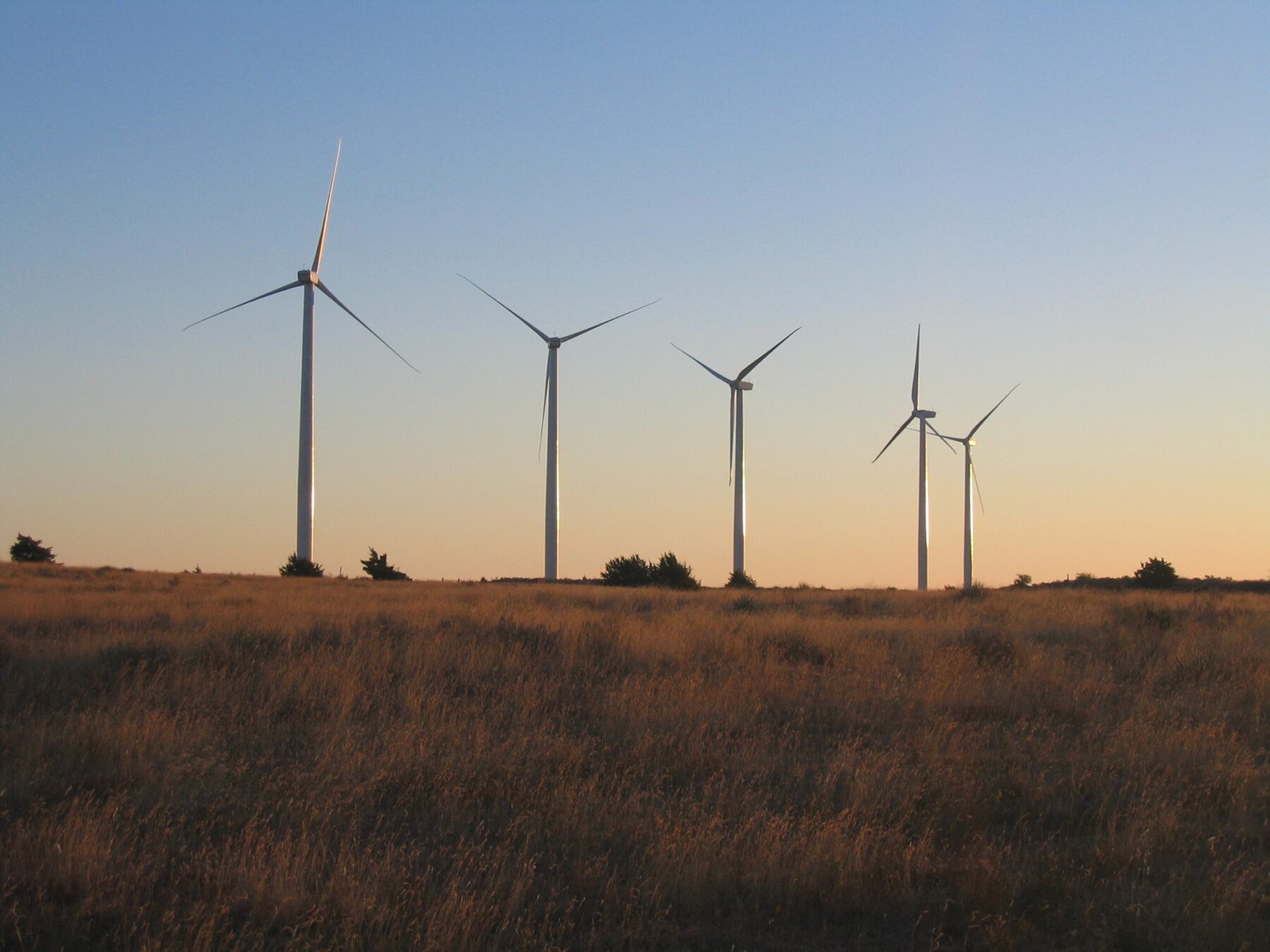“Wind in my hair, I was there. I remember it all too well,” Taylor Swift croons throughout a 10-minute song. Wind does more than help paint a near-perfect picture of lost love, though. By building the infrastructure required to harness its power, the public and private sectors are changing the world. Today, on Global Wind Day, the Global Wind Energy Council and WindEurope lead the charge in celebrating and reflecting on this natural phenomenon.
So what is wind, exactly? It is caused by a combination of our rotating planet and an uneven spread of heat from the sun. Essentially, warmer air above the land rises, and cooler, heavier air above the water shifts to replace it.
This effect can also be seen on an atmospheric level. Warmer air near the equator rises, and cooler air from the poles sinks from a high-pressure system to a low-pressure one. When this resulting wind hits a turbine and moves the blades, it spins the rotor, which is connected to a generator — voilà, we have electricity!
Wind Is The No. 1 Renewable
According to American Clean Power’s (ACP) 2022 Annual Market Report, wind is the primary source of renewable generation of electricity in the U.S. Last year, 2,696 turbines representing a capacity of 8,511 MW were installed, bringing the country’s land-based total to 70,900 turbines and 144,132 MW.
The ribbon for last year’s biggest onshore wind undertaking goes to NextEra Energy Resources’ Firewheel Wind project in Texas, accounting for more than 1 GW and featuring 367 turbines. The project resulted in 21 full-time jobs and 300 construction jobs.
Oklahoma’s Traverse Wind project followed closely behind at 998 MW, featuring 356 turbines. The facility, owned by Southwestern Electric Power Company and the Public Service Company of Oklahoma, represented an investment of $1.3 billion.
Plus, factories producing turbine parts are propelling the industry even further. For example, CS Wind is expanding its Colorado factory by 900,000 square feet, which will lead to hiring 850 more people.
It will also enable it to churn out 10,000 turbine towers annually when all three construction phases are finished in 2028.
TPI Composites had to shut down its Iowa plant for the production of turbine blades in 2021. However, the incentives from the Inflation Reduction Act enabled the company to reach a new agreement with General Electric and reopen the facility, restoring about 700 jobs.

Photo Courtesy Firewheel Wind
Offshore Projects Making Gains
The incredible thing about wind power is that we can also harness its energy as it crosses major bodies of water. Based on ACP’s May 2023 Offshore Wind Market Report, 42 MW of offshore wind are currently running in American waters. They consist solely of Rhode Island’s 30 MW Block Island Wind Farm, developed by Ørsted, and the 12 MW Coastal Virginia Offshore Wind Pilot Project, developed by Dominion Energy.
Block Island employed 300 workers throughout construction and features five wind turbines that save 1 million gallons of diesel and 40,000 tons of carbon emissions per year. Generating enough power for 17,000 homes, it covers all of Block Island’s energy needs, with 90% of the electricity it produces still available to send elsewhere.
Meanwhile, the Coastal Virginia pilot project already avoids 25,000 tons of annual emissions. It is being expanded to 2,587 MW of energy by 2026, allowing it to power 660,000 homes and employ 1,100 people.

Photo Courtesy Governor Dan McKee
However, more offshore wind is being readied as we speak. At the end of last year, there was also 51,377 MW of additional offshore capacity in development: 33,875 MW across 18 projects are in early development, 16,564 MW across 18 projects are in advanced development — including the Coastal Virginia expansion — and 938 MW are under construction.
Two of the projects under construction, the 816 MW Vineyard Wind 1 being developed by Avangrid and Copenhagen Infrastructure Partners off the coast of Massachusetts and the 132 MW South Fork Wind Farm being created by Ørsted and Eversource off Long Island, are in federal waters.
Vineyard Wind’s first turbines arrived in Massachusetts earlier this month. However, the 3,500 MW Kitty Hawk project off the Outer Banks, which is still in early development by Avangrid, is set to be the largest of all these.
Like onshore wind, several companies are also investing in facilities, specifically making parts for their offshore counterparts. For example, General Electric is building two factories in New York through its subsidiaries. LM Wind Power will build a blade manufacturing factory that will create 650 direct jobs, 900 indirect jobs, and 500 construction jobs.

Photo Courtesy Kitty Hawk Wind
Standout States
While not all states have equal access to wind power, some standouts exist. Texas installed almost 4.2 GW in 2022, invested about $6.3 billion in projects, and provided nearly 25,500 jobs, accounting for 21% of total employment in the sector. Wind served as the biggest electricity source last year in several other states, including Iowa, Kansas, New Mexico, Oklahoma, and South Dakota.
However, it also provides more than 20% of statewide electricity in Colorado, Maine, Minnesota, North Dakota, Nebraska, Wyoming, and Texas. But with new incentives, we can expect many states to be stepping up their wind energy efforts in the years to come.





